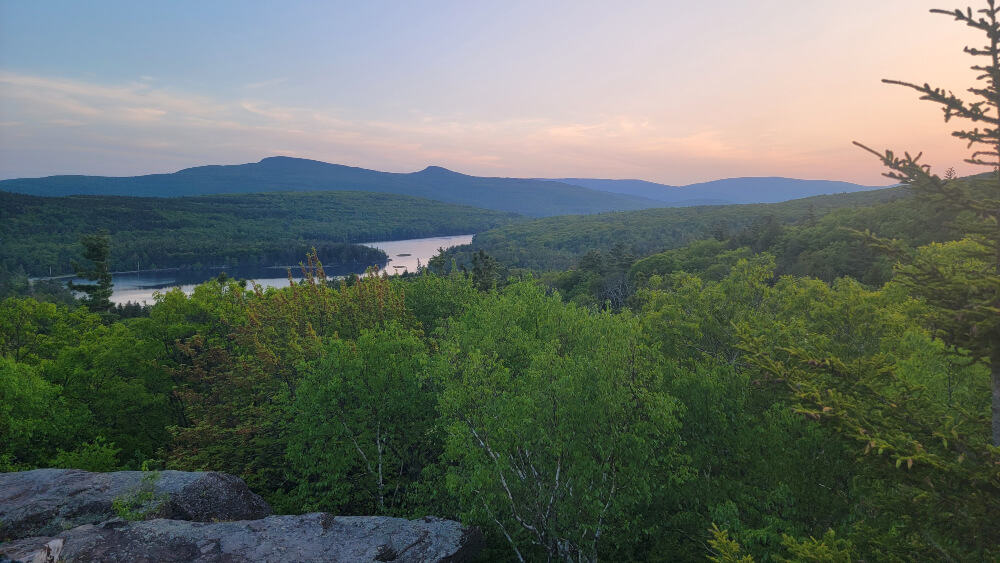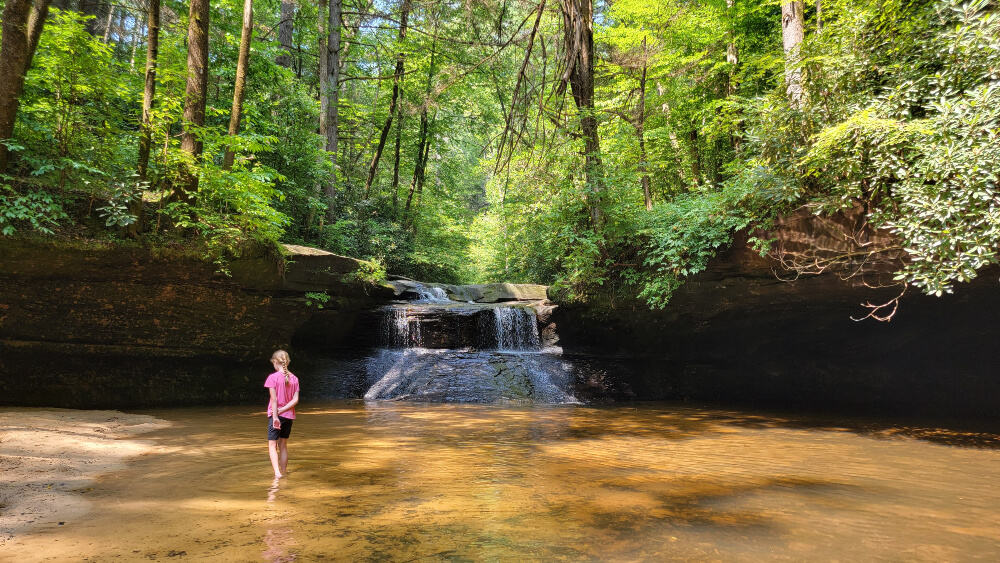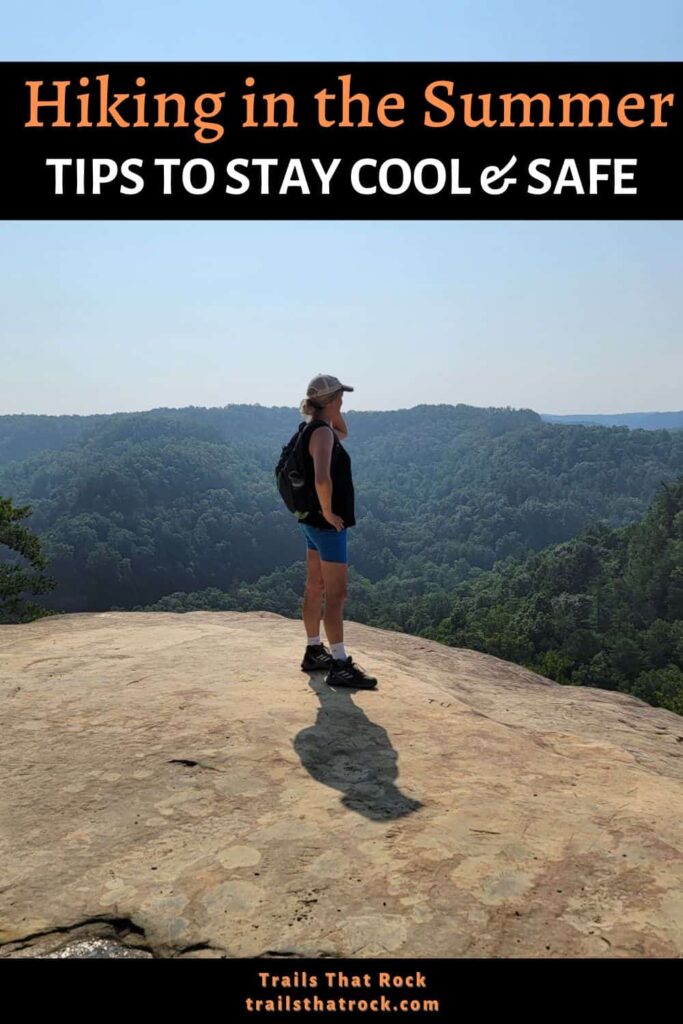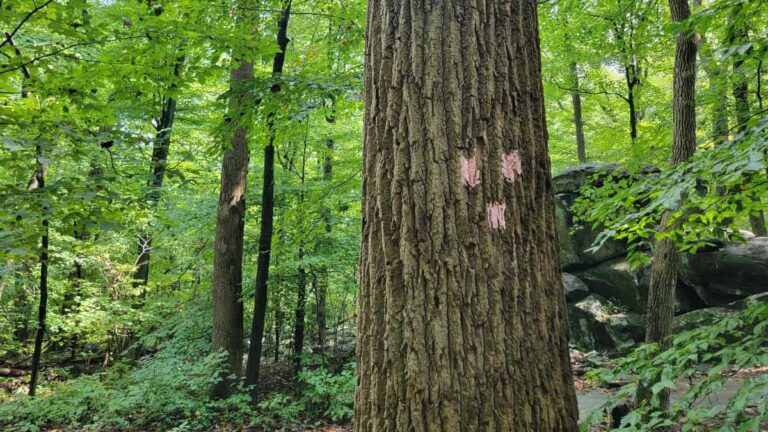Hiking in summer is a popular activity! The days are longer, the kids are off school, and people are making the most of their weekends and vacation days.
But with summer comes a lot of heat! And that can make for uncomfortable and even unsafe conditions for hiking. But that doesn’t mean you should avoid hitting the trails when it’s hot out. You just need to know how to stay cool and comfortable.
The guide below shares the risks of hiking in extreme heat, as well as some summer hiking tips to keep safe and comfortable while on the trail.
Disclosure: Some of the links below are affiliate links, meaning, at no additional cost to you, we may receive a commission if you click through and make a purchase.
Summer Hiking: The Good Stuff
There are many great reasons to get out and hike during the summer.
You have more daylight hours, meaning you can get out early and enjoy a hike before the rest of the world is even awake. Summer is a great time to tackle popular trails, like Kaaterskill Falls trail in the Catskills, Shades of Death at Hickory Run State Park in Pennsylvania, or Natural Bridge in Kentucky.
You can enjoy the beauty of the trees around you, especially on the eastern side of the US. Hiking in late fall and winter is nice, but you don’t get that much green, except for the occasional pine tree.
Hiking in Hot Weather: The Risks
As lovely as hiking in the summer is, it comes with risks. These are some of the things you should be wary of when hiking in extreme heat.
◾ Dehydration
Mild dehydration is common when hiking in the summer. Your body loses a lot of fluid through sweat, so it needs to be replenished. Signs of dehydration include dry lips, headache, dizziness or lightheadedness, and muscle cramps. Darker urine also indicates that you’re not bringing in enough fluid. You can combat dehydration by drinking enough water or sports drinks.
◾ Heat Exhaustion
According to the Mayo Clinic, heat exhaustion occurs when your body overheats, typically due to exposure to high temperatures, high humidity, and strenuous physical activity. When you hike during the summer, those are three things you are exposed to, putting you at a high risk for heat exhaustion.
You can quickly identify heat exhaustion by these symptoms, though not all of them may be present.
- Cool, moist skin with goose bumps when in the heat.
- Heavy sweating
- Faintness
- Dizziness
- Fatigue
- Weak, rapid pulse
- Low blood pressure upon standing
- Muscle cramps
- Nausea
- Headache
Heat exhaustion is not a medical emergency but can turn into one (read more about heatstroke below). If you experience any of the above symptoms while hiking, stop, rest (in the shade if possible), and drink fluids. Do not continue until your symptoms subside.
◾ Heatstroke
Heatstroke is a very dangerous medical emergency. According to the Mayo Clinic, it is caused by the body overheating due to prolonged exposure to high temperatures, usually along with physical exertion, like hiking.
Symptoms of heatstroke are similar to heat exhaustion but are more severe. They include:
- High body temperature
- Altered mental state or behavior, including confusion, agitation, slurred speech, and irritability.
- Alteration in sweating
- Nausea and vomiting
- Flushed skin
- Rapid breathing
- Increased heart rate
- Headache
If you are with someone experiencing heatstroke, call 911, get them to shade if possible, remove excess clothing, and cool them down with whatever you have on hand. If you have a cooling towel or ice packs, place them on their head and neck or in their armpits and groin area.
◾ Mosquitoes and Ticks
Although insects are present in the spring and fall (and sometimes in the winter), they are most prevalent in summer. Unfortunately, these insects can spread diseases. To avoid bites, make sure to use a good insect repellent when hiking in the summer. You can also spray your clothing and gear with Permethrin, which lasts for a few washes.
◾ Poisonous Snakes
Like insects, snakes start appearing in the spring (in the northeast United States). However, they are more common to see in shady spots or large rocks along hiking trails in the summer. Always watch for them and give them a wide berth if you encounter them. They typically don’t bother you if you don’t bother them!
How to Hike in the Summer Safely
1. Choose Shorter and/or Easier Trails
If you’re an avid hiker who is used to a 5, 7, or 10-mile trail, this might not apply to you. But if you’re the occasional hiker, the summer is not the time to do a long or difficult trail!
Choose a shorter trail (less than 4 miles) rated no harder than moderate. You’ll also want to research the steepness and grade of the trail. Assume that it will take you about 30 minutes to complete one mile. How long can you tolerate being outside in the heat?
Also, if you can avoid an unshaded trail, that would be even better. However, that can be difficult if you’re hiking out west.
2. Hike in the Morning or Early Evening
The hottest time of the day is typically between noon and 5 p.m. If possible, avoid that time and go for an early morning hike. The temperature could be up to 20 degrees cooler in the morning than in the afternoon.

If you’re not a morning person, try an early evening hike. A sunset hike is always fun (be prepared with headlamps). Although it might still be hot out, you’ll avoid the heat of the sun blazing down on you.
As an added bonus, the trails are usually less crowded during these times!
3. Find a Creek or Waterfall
The best way to beat the heat when hiking is to take a dip in the water along the trail. It’s also typically cooler by the water, so even if you don’t want to get wet, you’ll still have some reprieve from the heat. For this reason, we’ve been able to enjoy several waterfall trails in the middle of summer.

A creek or waterfall is also a great place to soak a cooling towel to help cool you off even further as you finish your hike.
4. Wear the Right Clothing
Wearing the clothing can make a big difference in your comfort level when hiking in the heat. Stay away from cotton and heavy fabrics that hold onto moisture. Instead, opt for lightweight synthetics that dry quickly and are sweat-wicking.
5. Wear Sun Protection
Sunscreen should be worn year-round, anytime you’re outside. However, UV radiation is stronger in the summer, especially during midday. Protect your skin with sunscreen and wear a hat or visor to shield your face. The last thing you want to worry about is sunburn after a day on the trail.
6. Rest More Often
As noted above, one of the biggest risks of hiking in the summer is heat exhaustion, which can lead to heatstroke. A way to avoid heat exhaustion is to take frequent rest breaks. Even if you don’t feel too tired, take a break. Heat exhaustion can hit you quickly, so it’s better to be safe than sorry!
7. Drink More Water
You’re always more at risk for dehydration when outside in the heat, especially when doing strenuous physical activity. Stay hydrated by drinking more water than you usually would on a hike. Also, don’t forget about electrolytes! Your sodium levels can deplete as you sweat and become more diluted if you drink too much water. Throw a few electrolyte packets into your bag to add to your water while on the trail.
Summer Hiking Tips Wrap-Up
The above are just some of the ways to keep you comfortable when hiking in the summer. Like every season, there are positives and negatives when hiking in the summer. But if you are prepared and know the risks, you can hit the trails in the heat!
Pin It For Later


